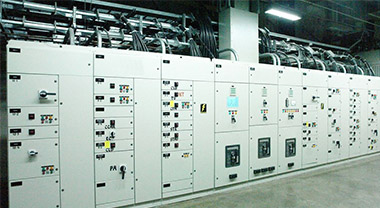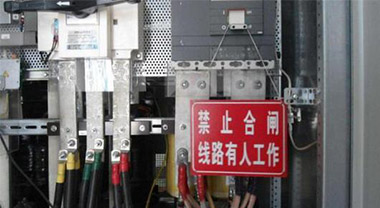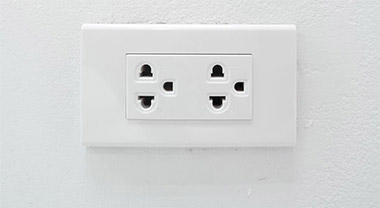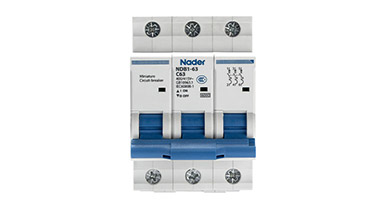What is the difference between relay and circuit breaker?
In the realm of electrical engineering, terms like "relay" and "circuit breaker" are often thrown around, and while they may seem interchangeable to the uninitiated, they perform distinct functions in an electrical system. This blog post delves into the differences between these two critical components. We'll explore what each device is, how they work, their applications, and the crucial differences that distinguish them from each other. This information is designed to provide a deeper understanding of these terms for both professionals and laypeople alike.
Table of Contents
- Introduction to Relays and Circuit Breakers
- What are Relays?
- What are Circuit Breakers?
- Differences Between Relays and Circuit Breakers
- Summary and Conclusion
Introduction to Relays and Circuit Breakers
Both relays and circuit breakers play integral roles in protecting and controlling electrical systems. Despite serving different purposes, they work in tandem to ensure the safe operation of these systems. To truly grasp their functions and differences, we first need to understand what each of these devices is and the roles they play in an electrical system.
What are Relays?
Relays are electrically operated switches that open or close circuits by receiving signals from other parts of the electrical system. They allow for the control of a high-current circuit with a low-current signal. The main component of a relay is an electromagnet, which is used to open or close the switch.
Types of Relays
Relays come in a variety of types, each with its unique functions and applications. Some common types of relays include:
- Electromechanical Relays: These use an electromagnet to open or close the contacts.
- Solid-State Relays: These have no moving parts and use semiconductor properties to perform their switching operation.
- Thermal Relays: These are typically used in motor protection and respond to the heat caused by the current.
What are Circuit Breakers?
Circuit breakers are automatically operated electrical switches designed to protect an electrical circuit from damage caused by overload or short circuit. Unlike a fuse, which operates once and then must be replaced, a circuit breaker can be reset (either manually or automatically) to resume normal operation.
Types of Circuit Breakers
Like relays, circuit breakers come in various types, each suitable for different applications. Some common types of circuit breakers include:
- Thermal Magnetic Circuit Breakers: These are the most common type and combine a thermal circuit breaker with a magnetic circuit breaker in one device.
- Magnetic Circuit Breakers: These use magnetism to break the circuit when a surge of extremely high current occurs.
- Thermal Circuit Breakers: These respond to the heat produced by the current, similar to thermal relays.
Differences Between Relays and Circuit Breakers
While both relays and circuit breakers are essential for the safe operation of electrical systems, their functions, applications, and operation significantly differ. Let's delve into these differences to gain a deeper understanding.
Function
At the most basic level, relays are switches that open or close a circuit based on a signal from another part of the electrical system. They are often used to control a high-current circuit with a low-current signal. On the other hand, circuit breakers are protective devices that disconnect the circuit when a fault condition such as an overload or short circuit occurs.
Operation
A relay operates by an electromagnet that becomes magnetized and attracts the contacts to open or close the circuit when current flows through it. In contrast, a circuit breaker uses either a bimetallic strip (in thermal circuit breakers) or an electromagnet (in magnetic and thermal-magnetic circuit breakers) to break the circuit when the current exceeds a particular level.
Reset Capability
Once a circuit breaker has interrupted a circuit due to a fault condition, it can be reset either manually or automatically to resume normal operation. In contrast, a relay generally requires replacement or a reset of its actuation mechanism to operate again after a fault condition.
Indication of Condition
Circuit breakers often provide a visual indication of the circuit's status. For example, when a circuit breaker trips due to a fault condition, it usually moves to an "off" or "tripped" position. Relays, on the other hand, typically don't provide this visual indication of circuit status.
Summary and Conclusion
Understanding the nuances between a relay and a circuit breaker can make a significant difference when designing, operating, or maintaining electrical systems. While both devices play crucial roles in these systems, they serve different purposes and have distinct operational characteristics.
A relay, an electrically operated switch, controls a high-current circuit with a low-current signal, allowing smaller devices to operate larger systems without the need for high current capacity. On the other hand, a circuit breaker is a protective device that interrupts an electric circuit to prevent excessive current flow that could cause an overload or short circuit.
Relays and circuit breakers are not mutually exclusive but rather complement each other in an electrical system. By working together, they ensure that electrical systems function safely and efficiently, preventing damage to equipment and reducing the risk of electrical fires.
This blog post aimed to shed light on the differences between these two essential components in an electrical system. The information provided here is meant to serve as a guide and does not replace professional advice or instruction. Always consult with a qualified electrician or electrical engineer when working with electrical systems.




